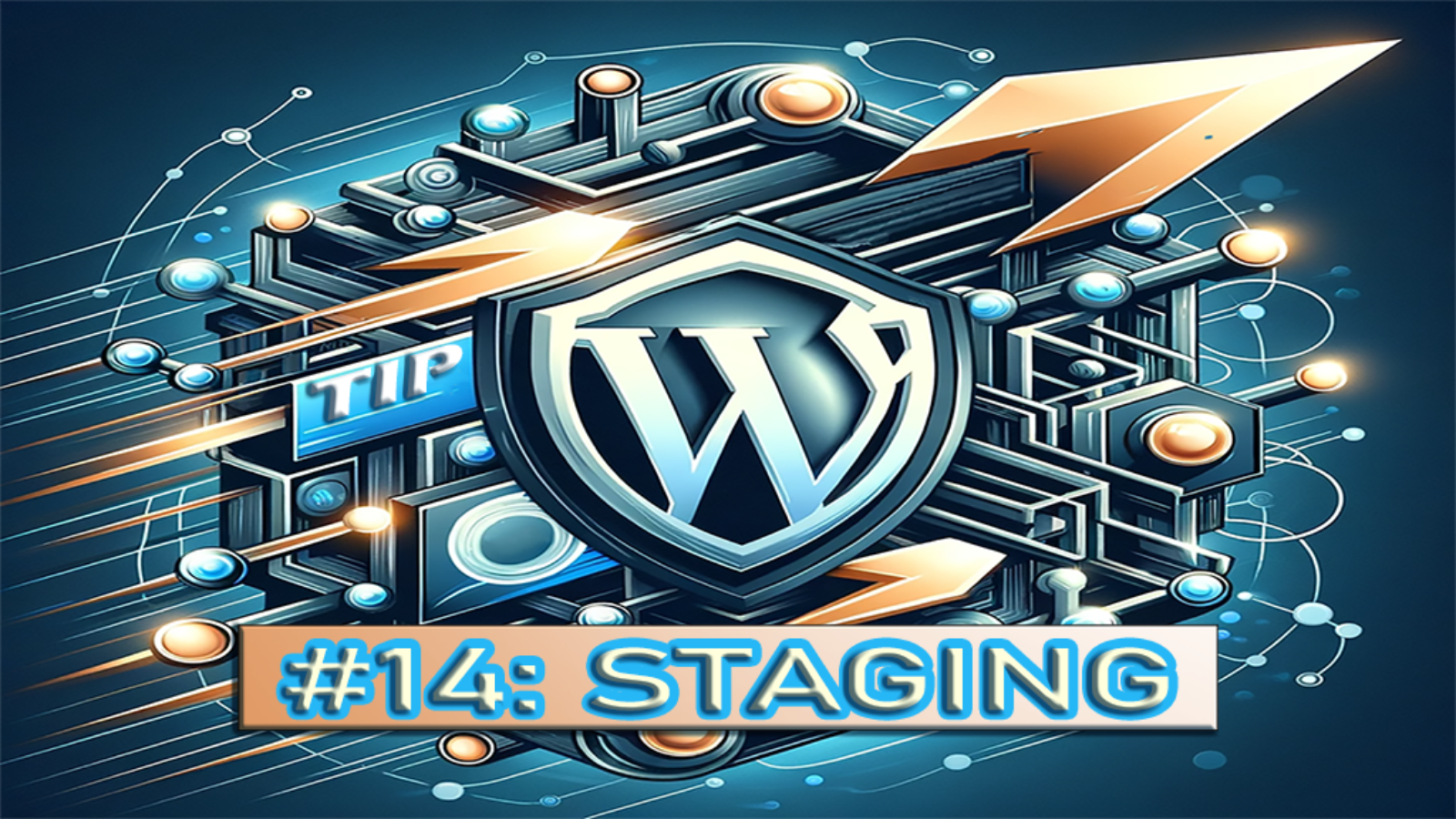Making sure that website updates run smoothly without causing any disruptions, to the site is crucial for maintaining a notch online presence. A WordPress staging environment plays a role in achieving this goal. This article delves into the details of carrying out updates in a staging environment to ensure a transition when those updates are implemented on the live site.
What exactly is a WordPress Staging Environment?
Think of a staging environment as a playground where your website can test out features or updates before they are presented on the live platform. It’s like a dress rehearsal where everything unfolds like it would during the event but with no risk of mishaps in front of the audience. WordPress staging is a copy of your live website that is specifically used for testing new website updates.
Why is this “sandbox” important? In terms it acts as your safety net against potential digital disasters. Picture implementing an update directly on your site only to discover that it disrupts the user experience—cue dramatic music! With a WordPress staging environment in place this worst-case scenario remains that—a scenario—as you can address any issues, in this controlled space without impacting your visitors or business operations. In a survey, by WP Engine, in 2021 it was found that 62% of developers regularly utilize a staging website to test updates before applying them to live websites.
“If you’re not testing in a WordPress staging environment, you’re testing in live production. And testing in production is really just gambling.”
Here’s a quick rundown of what a staging environment typically involves:
- Exact replica of your live website
- Safe space to test web updates, including content updates, plugin updates, and theme updates
- Ability to perform website performance updates, security updates, and SEO updates
- Identifying and correcting website bug fixes and site error fixes before they go live
For example, imagine you’re gearing up for a big website revamp, with a brand design some visual tweaks and various functional enhancements. Trying out these modifications, on the site could spell trouble. Instead, it’s wise to carry out all these updates in a staging environment to ensure integration and expected performance.

Benefits of Using a WordPress Staging Environment for Website Updates
When preparing to launch changes, on your website it’s wise to try them out in a testing environment like rehearsing a play before the big premiere. Just as actors aim to avoid mistakes on stage you wouldn’t want visitors encountering glitches or site outages due to updates. Here are some strong reasons why using a staging environment is crucial for smooth website updates;
Prevents Live Site Downtime
Picture this scenario; Your online store is in the midst of its sales period. You decide to implement some quick updates live. Suddenly the site goes down. With WordPress staging you can test changes without putting your site at risk of downtime. According to findings from Kinsta the average cost of application downtime amounts to $5,600 per minute – a sum that can be saved by ensuring your live site remains unaffected, during updates.
Finding and fixing bugs before releasing updates is crucial.
Remember the Y2K scare? It’s always better to address those issues. Using a staging environment allows you to identify and resolve problems without causing an uproar. As the saying goes, “Fail to plan plan to fail.” Taking measures saves you from dealing with problems later on.
Making sure that new updates work seamlessly with existing features and plugins is key.
Trying to force a peg into a hole is never a good idea – just like when updates clash with your current setup. A staging environment helps you test compatibility ensuring that everything works harmoniously together for a hassle web experience. In the words of Steve Jobs “You learn a lot, about yourself by working with tools.”
Keeping your site running smoothly is essential for enhancing user experience.
Nothing frustrates visitors more than encountering slow websites. According to research by Think with Google over half of users abandon sites that take, then three seconds to load. Ensuring that your updates don’t disrupt site functionality not maintains but also enhances user experience keeping your audience engaged and reducing bounce rates.
Common Website Updates to Test in a WordPress Staging Environment
Ah the staging environment – a playground where website updates can roam freely without risking any mishaps, on your site. Whether you’re making adjustments or embarking on a web makeover the staging environment is your trusted companion. Lets explore the essential website updates that should always undergo testing in this space before being unleashed
Content Management Systems (CMS) Updates
CMS platforms like WordPress serve as the foundation for websites. Regular updates introduce features enhance security and boost performance. However be cautious! An update that behaves well in your staging environment might cause issues in production.
SEO Updates
SEO acts as the ingredient that propels your site to higher search engine rankings. But proceed with caution; modifying keywords or meta tags without testing could harm your search visibility.
Plugin Updates
Plugins enhance functionality and aesthetics on your site. Nevertheless using incompatible plugins can lead to chaos. It’s crucial to test them in your staging environment to avoid any surprises down the road. As, per WPBeginner 35% of WordPress site failures result from conflicts.
Theme Updates
Themes define the identity of your website and its overall appearance. Updating your design can bring improvements. Its essential to test thoroughly to avoid any unexpected issues. Remember, the visual appeal of your website is, on the line
Security Updates
Ensuring your website is secure is a must. Security updates play a role in safeguarding your data and maintaining trust. WordPress staging allows you to check that these updates don’t disrupt functions on your site.
Website Performance Updates
Enhancing site speed and performance can greatly enhance user satisfaction. Slow websites tend to have bounce rates compared to fast loading ones. Testing these updates guarantees that your efforts in optimization yield results.
Content Updates
Keeping your site content fresh and up to date is crucial. Whether you’re publishing a blog post refreshing existing content or updating product descriptions it’s important to test these modifications. According to HubSpot businesses that regularly publish blog content see a 67% increase in leads generated.
Setting Up a WordPress Staging Environment
Embarking on the journey of website updates may seem daunting at first like diving, into the end of a tech pool. However staging environments act as a safety net by allowing you to test and refine changes before making them live on your site.
Think of it like testing your cake recipe in a trial kitchen before the baking competition. So how do you prepare this culinary… I mean, technological masterpiece?
Select a Hosting Provider That Offers Staging Options
Look for a hosting provider that supports website maintenance with a WordPress staging environment. Known providers such, as SiteGround, WP Engine and Bluehost come with this feature built in.
Duplicate Your Live Site
If you have the hosting provider you’ll need to make a copy of your live site. It’s similar to creating a version of your site in another realm where you can experiment without any consequences. According to WPBeginners survey 85% of websites are powered by WordPress making the process easy with plugins like WP Staging or Duplicator.
Set Up the Copied Site on a Staging Server
Once you have your copied site ready it’s time to relocate it to your hosting providers staging server. This server acts as your testing ground allowing you to make all the updates and changes.
Ensure Database Sync Between the Staging and Live Sites
Keeping the databases in sync is crucial. Maintaining data integrity, between your site and its copy is essential. Ensure your databases are, in sync to maintain the accuracy of your customer information, content and settings.
Deploying Updates from Staging to Live Site
Once the updates are tested and verified in the staging environment, here’s how to deploy them to the live site:
- Sync the Database from Staging to Live Site
- Transfer Updated Files to the Live Server
- Perform Final Checks on the Live Site
- Monitor the Live Site for Any Issues
Tools and Plugins for Managing a Staging Environment
Several tools and plugins can assist in setting up and managing a staging environment, including: WP Staging, Duplicator, ManageWP, All-in-One WP Migration, and many newer ones.

Conclusion
Testing website updates in a staging environment is crucial to ensure a seamless experience for your live site. By applying best practices and utilizing the right tools, you can effectively manage and deploy website improvements, ensuring continuous uptime and a better user experience. If you need assistance with your WordPress site please reach out to us at 2X Sales. We offer WordPress services and more. Contact us today!
External Links for Further Reading
Kinsta: Benefits of a Staging Environment Learn about the benefits of using a staging environment from Kinsta.
WP Engine: How to Set Up a Staging Site WP Engine’s guide on setting up a staging site.
Bluehost: Creating a Staging Environment Bluehost’s tutorial on creating a staging environment.
Smashing Magazine: Best Practices for Testing Smashing Magazine’s best practices for testing in production.
Think with Google: The Importance of Website Speed Insights from Google on why website speed matters.

